The Réti Opening: How to Play It as White and Black
- October 18, 2021
·
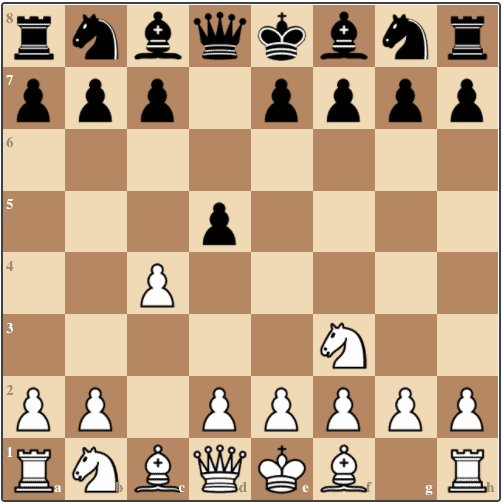
TL;DR — The Réti Opening
- The Réti Opening is one of the most versatile and flexible chess openings out there. Played by intermediate players and up to the highest level, this opening sets up a strategic and serious fight of a chess game.
- It is a hypermodern, flank opening. By holding back their central pawns back from the fire early on, White gains the ability to reel Black’s pawns into the center, before undermining and attacking them. Or, in a display of flexibility, they may decide to launch them forward and transpose to another opening.
- In the classical mainline, Black has three main responses, each of which requires a distinct approach from both players. Check below to find out what to do in each case (and a couple of traps to know).
Introduction
The Réti Opening is a chess opening created by and named after the Czechoslovakian master, Richard Réti. Before saying anything else, it’s important to point out that there is some discussion to be had about what moves actually constitute a Réti Opening! Some say that the move 1.Nf3 alone is a Réti, where others will insist that only the moves 1.Nf3 d5 2.c4 should be called a Réti:

This article will mostly deal with the Réti after 1.Nf3 d5 2.c4. In Richard Réti’s day, anything after 1.Nf3 was considered a Réti opening, but due to the various possibilities to transpose out of the Réti after 1.Nf3, this is no longer the case. This is in some way indicative of this opening move’s flexibility; as we will see later, 1.Nf3 can easily transpose into a variety of different openings. It is essential to understand, however, that the Réti is fundamentally a hypermodern opening. This means it allows White to refrain from committing to any particular pawn structure early on, instead seeking to control the key central squares from the flanks, with minor pieces, rather than directly occupying the center with their pawns.
One thing we can unequivocally say about the Réti is that it is a solid, well-respected, and potent opening, used since its creation by players at the very highest levels with winning results, from Karpov, Kasparov, and Kramnik, to Carlsen and Nakamura (not forgetting Réti master Ulf Andersson). It was also used by Réti himself to shock the chess world and end Capablanca’s 8-year undefeated streak in 1924. It usually leads to long-term positional battles in which each player will try to prove the worth of their central approach, and is an excellent opening for strategically-minded players who prefer a positional squeeze to a tactical free-for-all (although it can get wild sometimes).
Fundamental Ideas in the Réti
If there is a definitive characteristic of the Réti from White’s perspective, it is the opening’s flexibility. For this reason, it is more of a system than an opening in itself, allowing White to make patient yet useful moves while waiting for the Black player to commit to a structure. Once this occurs, White has various pathways available to developing a long-term positional advantage, maneuvering their minor pieces from the flanks to gain control of the center and the game.
That said, White does have some typical plans, including fianchettoing the kingside bishop (though not always) and castling short, setting up a fortress-like structure on the kingside and bidding for control of the light squares. Sometimes White will also fianchetto on the queenside, and sometimes they will push b4. Sometimes preparing and pushing d4 is a key move, sometimes d3 is the preferred route. All of these are common plans in the Réti, and all serve a concrete purpose, but which plan White chooses to follow all depends on how Black responds in the opening.
By way of example, here is one common setup in the Réti:
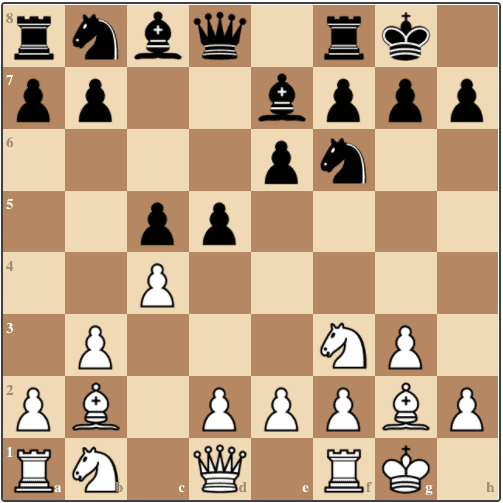
Here, we can see some of the attacking benefits to this setup, with a powerful fianchettoed kingside bishop on g2, ready to be released after the knight moves from f3. But, say Black plays dxc4 on move 2, White’s kingside bishop is often a useful resource in recapturing this pawn, so White may not fianchetto it, but rather push e3 and transpose into 1.d4 territory (we should also mention that this pawn could be recovered by means of Na3, Qa4, or can even be gambited!) See what we mean about flexibility? Similarly, after 1.Nf3 d5 2.c4 Nf6, play could feasibly continue 3.cxd5 Qxd5 4.Nc3 Qa5 5.d4 g6 6.Bd2 Bg7 7.e4 until the below position is reached, with Black fianchettoing on the kingside, and White opting for classical development:
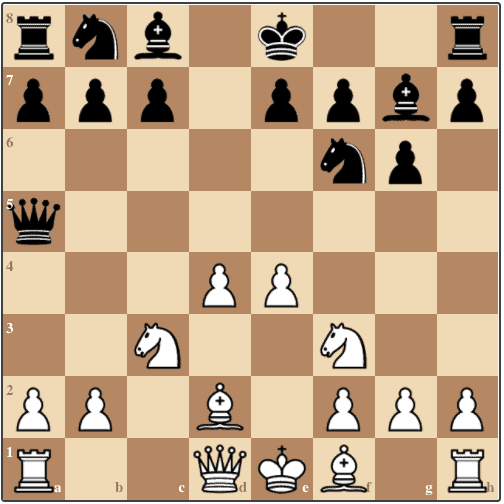
In this Réti variation, White elects to develop classically and build a healthy base of central pawns, reaching a completely different structure than if Black had played 2…e6.
Here we see the range of the Réti opening. Depending on Black’s first few moves, the game may take on a completely different aspect, so it is not an opening you can play on autopilot. For an introductory walk through what the Réti Opening has to offer, check out this free and easily digestible course: Short & Sweet: The Réti, by IM Ahmad Alkhatib.
Top 3 Reasons to Play the Réti
Retain flexibility and control
If a chess game were a conversation, the Réti would be a loaded question. As White, there are few more flexible options out there than the Réti, and that flexibility packs a punch. You force Black to make a structural commitment, while your own intentions and plans remain undisclosed. Even better, whatever they play, you can use Black’s move against them, changing your plans in order to most efficiently take advantage of their move.
Avoid forcing lines from Black
The Réti allows you to keep an element of control, regardless of your opponent’s approach. By keeping your central pawns safely on their starting squares, you avoid early contact and simplifications that favour Black, and instead retain the ability to dictate the pace of the game. If you prefer to avoid unpredictable and ultra-sharp positions in favour of a game based on who has the better understanding of certain strategic positions, the Réti is hard to surpass. It’s also a great way to mix it up if you want to avoid your opponent’s prepared forcing mainlines after 1.e4 or 1.d4.
Benefit from unexpected move order traps
Thanks in no small part to the various paths the opening can take, the Réti is a challenging opening to face, and often Black is less comfortable with a line that starts with 1.Nf3 than a first move of 1.e4, 1.d4, or 1.c4. Even if the game does eventually transpose into a 1.c4 opening, for example, changing up the move order in which you arrive at a position will often enough grant White the opportunity to take Black out of their comfort zone. Additionally, there are move order traps that, as you gain experience playing the Réti, will also tend to fall in White’s favour. Black may play ‘normal’ developing moves that, due to a slight change in move order, are in fact early blunders. Check out some deadly variations in detail, courtesy of FM Carsten Hansen and IM Christof Sielecki, in the course: Short & Sweet: 1. c4 / 1. Nf3.
How to Play the Réti Opening as White
As mentioned above, typical maneuvers for White in the Réti include the following:
- A kingside fianchetto
- Sometimes a double fianchetto
- Light-square control
- A timely pawn push to d4, b4, or even e4
All of these moves are based around a theme: how to control the center. With the kingside fianchetto, White aims to add pressure to the d5 pawn, looking to further attack it with their pieces and undermine Black’s center. The queenside fianchetto discourages d4 from Black, and (for White) pushing d4 at the right time can be a game-defining break. As we will see later, the Réti fundamentally revolves around how Black tries to maintain and justify their presence in the center, and how White will seek to disrupt and challenge it.
Possible Réti Opening Transpositions
But, crucially, each game will take on a distinct character based on how Black responds to the opening. It has to be said that, by its nature, there are several directions the Réti could turn, and each requires a different approach from White. Transpositions that may well occur include various forms of the English Opening as well as 1.d4 openings (Chigorin, Slav, QGD, Tarrasch to name a few…), and that’s not to mention what could transpire if we consider the Réti as just 1.Nf3, as opposed to the more concrete definition of 1.Nf3 d5 2.c4.
After 1.Nf3, Black can play 1…f5, opting for a Dutch defense, 1…c5 looking for a Symmetrical English setup, and the game can also become a King’s Indian Defense or Grünfeld (after 1.Nf3 Nf6 2.c4 g6), or even a Ruy Lopez (after 1.Nf3 Nc6 2.e4 e5 3.Bb5). You could write a book on the different variations leading after 1.Nf3, and in fact, many people have! For the best way to discover the secrets of the Réti opening in all its possible forms, consult International Master Ahmad Alkhatib’s excellent course: Fight Like Kramnik: Play 1.Nf3! – The Réti.
To continue getting an introduction to the Réti, let’s look at the most common continuations you are likely to face.
Black’s Top 3 Responses to the Réti
For the purposes of introducing the main concepts of the Réti, we will focus on how the game continues after Black’s three main responses following 1.Nf3 d5 2.c4, and we’ll throw in a couple of traps for good measure.
1. Black Defends d5 (2…e6 / 2…c6)
By playing 2…e6 or 2…c6, Black immediately defends their pawn on d5. First let’s look at the move c6, one of the most popular continuations for Black against the Réti:
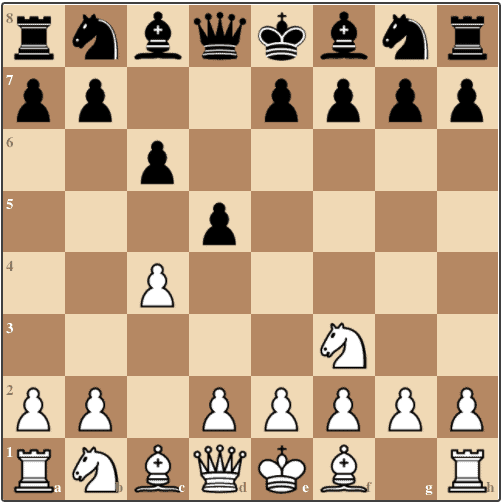
Here Black adopts a Slav-like approach, defending the d5 pawn without blocking in their light-squared bishop. If White plays 3.d4, the game will transpose into a Queen’s Gambit / Slav position. However, in this position note that if Black tries to develop this troublesome c8 bishop to f5, a handy developing move for Slav players, White has an interesting resource to blunt the bishop – d3 – that would not have been available after 1.d4 in the Queen’s Gambit! Like a lot of Réti variations, patience is key here. White can play e3 to lend support to their center, as well as g3 and Bg2, and in some cases Na3 and Nc2, while Black can likewise consolidate the center with e6.
However, if Black decides to defend their central pawn with 2…e6, the game heads in a slightly different direction:
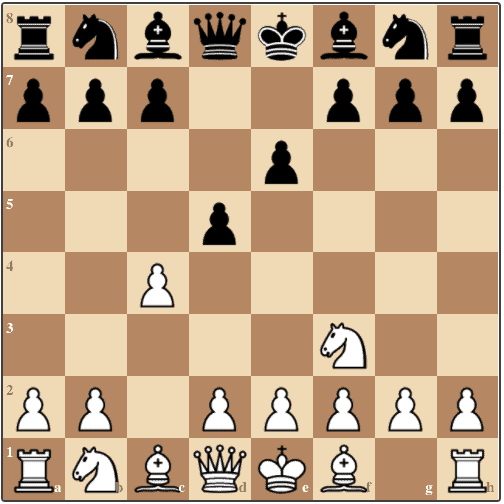
As in the Queen’s Gambit, compared to the c6 variation, the major drawback of Black’s e6 move is their c8 bishop, but this is not an altogether bad setup for Black. Let’s look at a natural continuation, after for example 3.g3 Nf6 4. Bb2 Be7 5. O-O O-O:
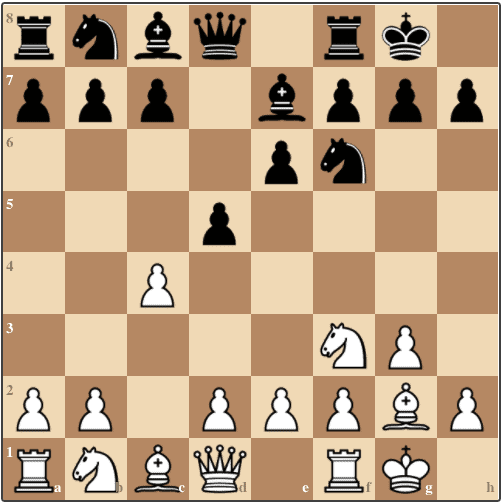
In this position, White could play d4 and transpose to a Catalan. This is a common route for Réti players, but the move b3 is a continuation more consistent with the Réti, setting up for a double fianchetto. If Black gets in the move d4, White’s bishop on b2 will be restricted and development will not come as easy. For this reason, cxd4 is a popular choice for White here. Instead of d4, Black also has the option of b6 and Bb7 to release the problematic bishop, or c5 looking to expand and take over in the center.
2. Black Grabs Space (2…d4)
As mentioned above, one playable attempt for Black is the advance variation, pushing the d-pawn past White’s pawn on c4:
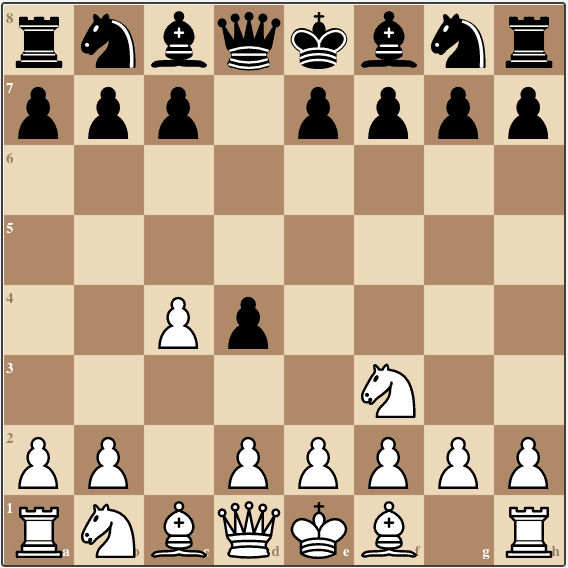
This move (which can also be played by Black later on in the opening, for example after 1.Nf3 d5 2.c4 e6 3.g3 Nf6 4.Bg2 d4) leads to a setup similar to a Benoni, only with the colours reversed. As White will have less space here, they should welcome exchanges, with e3 a typical challenge to the advanced pawn. Black is unlikely to benefit from d3 as this pawn will be isolated and weak, so c5 is a typical response from Black, supporting the pawn.
In the above diagram, an interesting recommendation for White is the move 3.b4!, setting up for an advance on the queenside, though here Black has time to play f6 followed by e5, developing a healthy pawn chain, claiming control of the dark squares, and attacking b4!
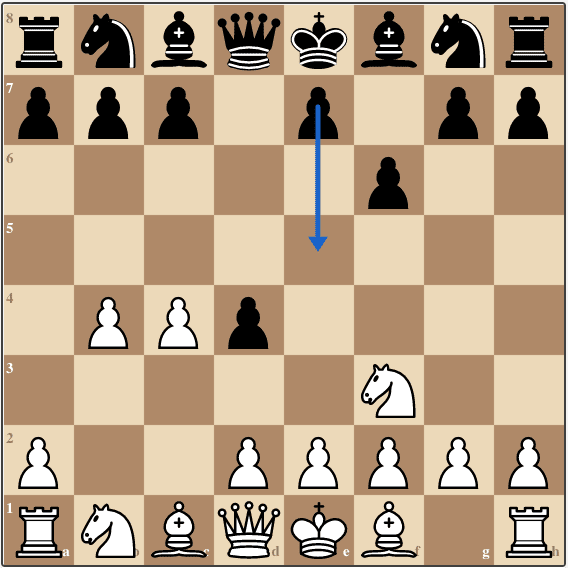
With no time to play e3 now, White can consider further advancing the c-pawn to c5. This blunts the f8 bishop and opens up a tasty diagonal for White’s f-bishop, which can now find a home on c4.
3. Black Takes the Pawn (2…dxc4)
This variation is known as the Réti accepted. In any opening that offers up a pawn, it is always important to know what to do when your opponent accepts the offering, in this case with 2…dxc4:
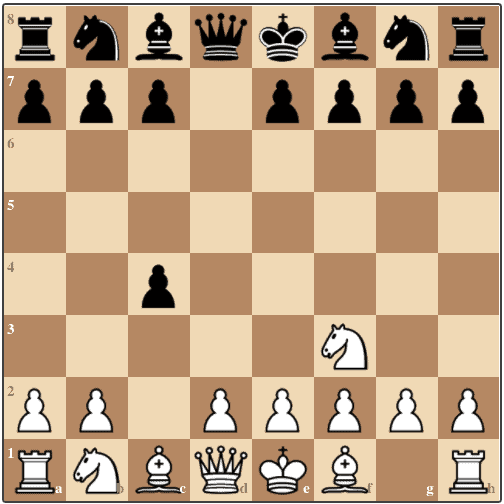
Of all the three variations described here, this is perhaps the least challenging for White to not only recoup the pawn, but also to gain an advantage in the process. White has a variety of ways to regain the pawn, playing e3 and opening up the f-bishop, playing Qa4+, and even playing Na3. Common continuations for Black after 2.dxc4 3.e3 include 3…Nf6 and 4…Bg4 deploying the c-bishop out to pin the f-knight. Although it will prove difficult to retain the material gained by taking the pawn, for Black this variation avoids transpositions to the Queen’s Gambit and, by relieving the tension in the center, can lead to a quieter and potentially draw-bound game (unless they fall into the trap below…).
A Réti Opening Trap for White
Now that we have covered the normal stuff, it’s time to explore some of the fun you can have as White playing the Réti. First, consider this opening trap after the moves 1.Nf3 d5 2.c4 dxc4 3. e3 Nf6 4. Bxc4 Bg4:
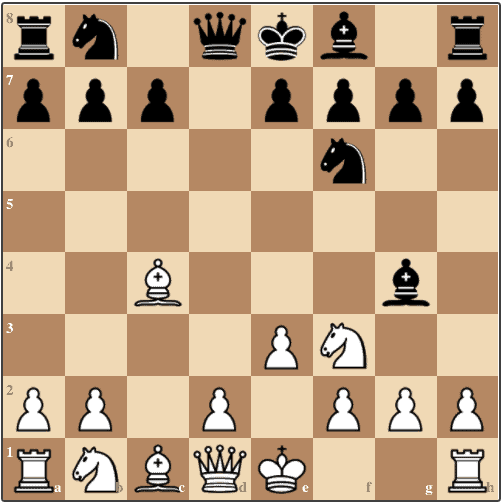
The next move sets the trap: 5.Ne5. This seems to blunder the White queen! But, if Black accepts the gift with 5…Bxd1:
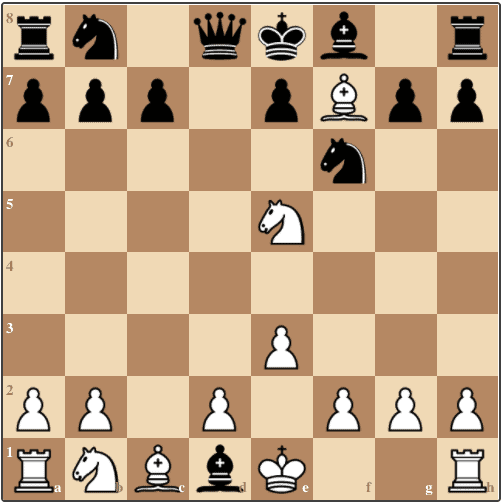
Game over, after 6.Bxf7#, thanks to the e5 knight protecting the bishop and taking away the king’s only flight square.
The Tennison Gambit
Although the next gambit only occurs after White plays 2.e4 (rather than 2.c4), it is an oft-deployed and fun gambit to know (it also works against the Scandinavian). The idea is, after 1.Nf3 d5 2.e4 dxe4 3. Nf5 Nf6 4.d3:
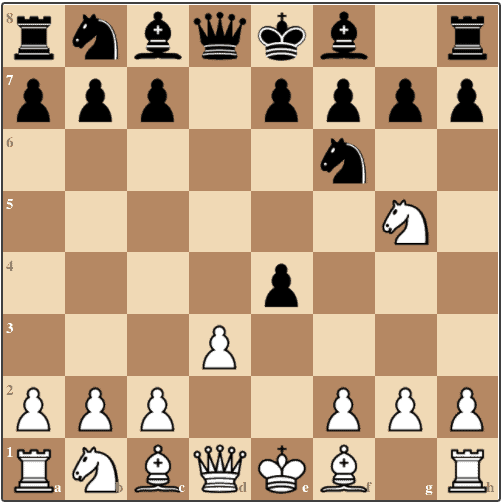
The continuation of the trap is 4…exd3 5.Bxe3 h6, with Black looking to kick the troublesome g-knight. However, this is a serious mistake! White can play 6. Nxf7!, forking the queen and the rook. The question is, after 6…Kxf7, can you identify the killer move?
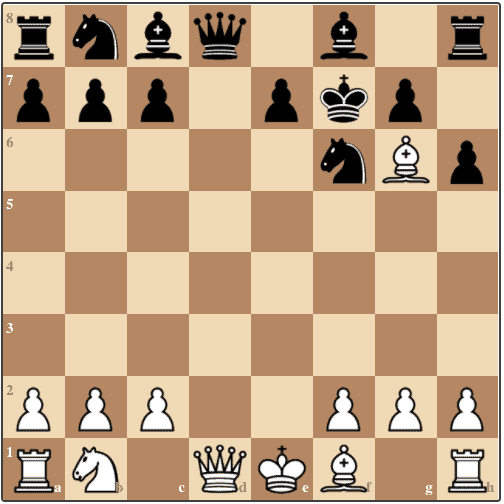
Black is forced to take the bishop, but cannot protect the Black queen, which is hanging. After 7…Kxg6 8. Qxd8, the game is basically won for White. Whichever side of the Réti you are playing, make sure to remember this gambit!
Is the Réti Good for Beginners?
As you can see, there is quite a bit of material to absorb in order to cover the various possibilities that can arise from a Réti. Flexibility can be an advantage when you are well-versed in a variety of positional structures, but also a burden, especially for beginner players less comfortable with different types of positions and prophylactic play.
For this reason, the Réti is not ideal for absolute beginners. At that stage of your chess journey, you would be better off learning some essential opening principles and finding a classical opening that allows you to develop a foundational understanding of central control (like, for example, the Italian or Spanish Games). However, for intermediate and club players and above, the Réti is certainly an appropriate opening, and one with great learning potential attached to it, especially in terms of positional and long-term strategic play.
A Classic Réti Game Analysis
Now for a quick look at a classic encounter, Richard Réti vs Albert Becker in 1923, in which Réti breaks some rules, but we forgive him because he invented this opening.
The game starts reasonably enough, 1.Nf3 Nf6 2.c4 c5 3.g3 g6 4.Bg2 Bg7, with Becker adopting a Symmetrical English defensive strategy, and Réti surely happy with the activity his bishop will have on the h1-a8 diagonal:
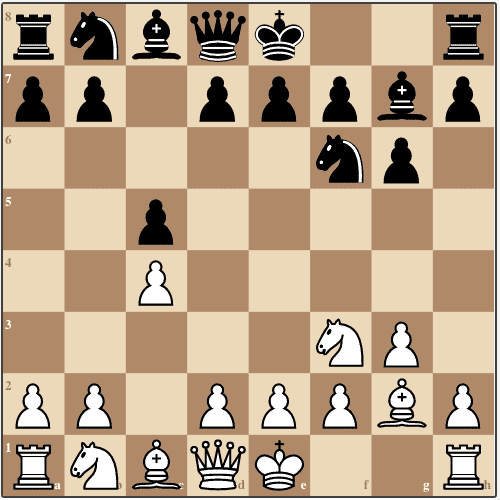
After the symmetry is broken, following 5.Nc3 Nc6 6.d3 O-O, you might expect White to follow suit and castle short, but instead Réti sets the tone for the game, attacking the pawn on c5 with 7.Be3:
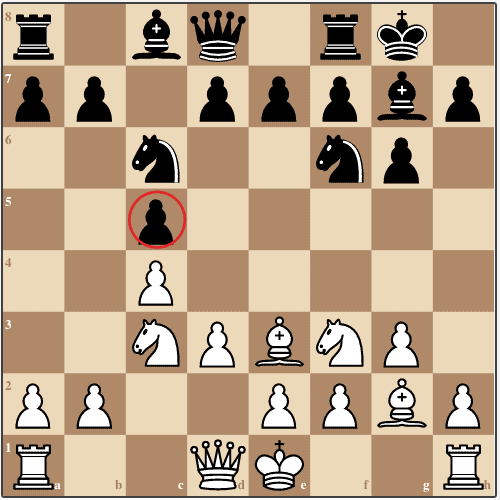
After 7….d6 and the prophylactic 8.h3, White sets up a battery and brings up the possibility of trading bishops, removing the Black king’s key defender and creating dark-squared weaknesses around the king.
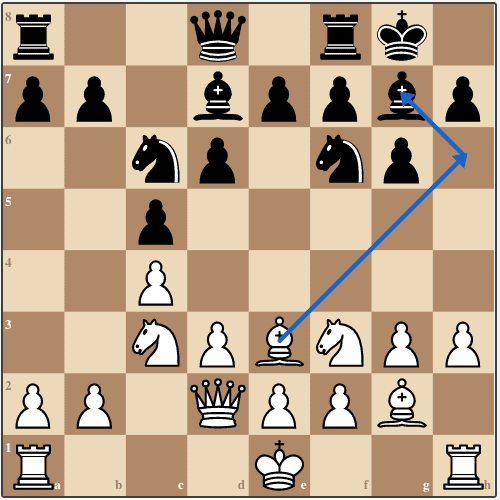
Following 9…Rb8 10.Bh6, Réti continues his plan, and Becker retreats the Knight with 10…Ne8, looking to bolster his kingside defences, but in the process weakens h5, allowing Réti to push on, with the direct 11.h4! Note that White still declines to castle and commit his king…
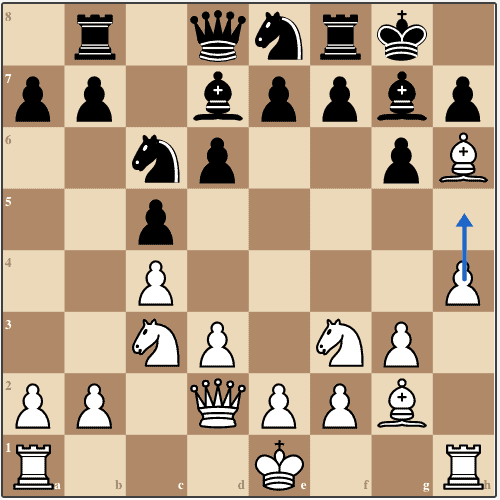
11…g4 12.h5 gxh5 13.Nh4, freeing up the bishop to join in on the attack. 13…Qd7 14.Be4 Nd4 15.O-O-O, Réti castles long! By waiting long enough before committing the king and eschewing early opportunities to go for a small positional advantage, in this game Réti bets on a direct and overwhelming kingside assault:
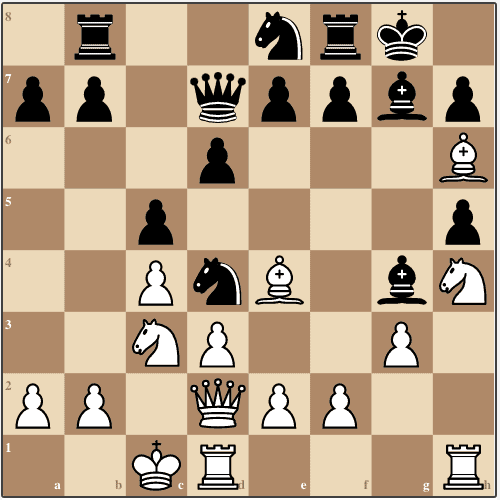
Becker continues with 15…b5, looking to create counterplay on the queenside, but Réti manages to navigate this and continue his plan: 16.f3 b4 17.Nb5 Nxe2+ 18.c2 Nxg3 fxg4 Nxe4:
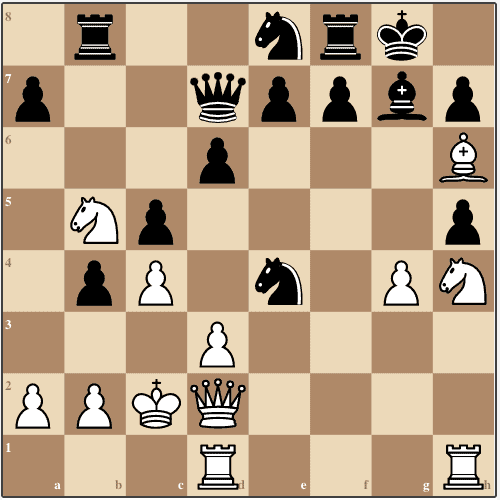
The light-squared bishops are off the board, and Réti’s knight is somewhat out of things on b5, but White is opening up the kingside, Black is low on time, and the writing is nearly on the wall! After Réti recaptures with 20.dxe4, Becker goes after the h6 bishop 20…Qe6, to no avail after the crucial attacking move, 21.Nf5 (aka “knife f5”).
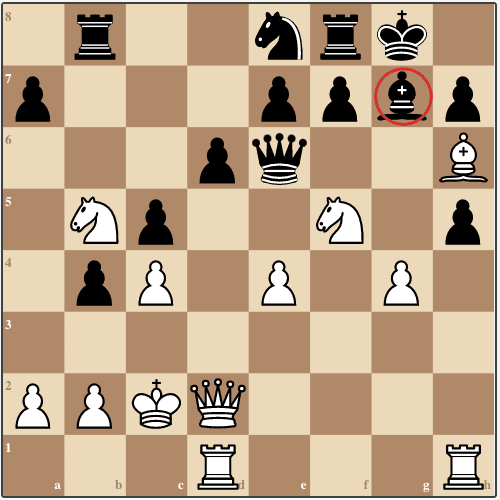
Becker continues by grabbing a series of pawns with check, 21…Qxc4+ 22.Kb1 Qxe4+ 23.Ka1 hxg4 giving Black a pawn advantage of 8-2, but it’s not going to count for much after Réti finally removes the g7 bishop with 24.Bxg7 Nxg7 25.Nxg7 Kxg7, after which 26.Qxh6+ forces the king back, 26…Kg8, and 27.Rdg1 threatens a nifty mate after Rxg4+ then Qh7#:
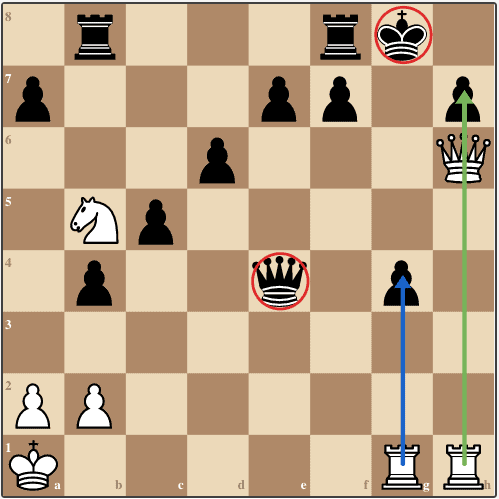
So, 27…Kh8, but Becker resigns after 28.Rxg4 Qxh1+ 29.Qxh1 Rg8 30 Rxg8+ with Réti’s advantages overwhelming.
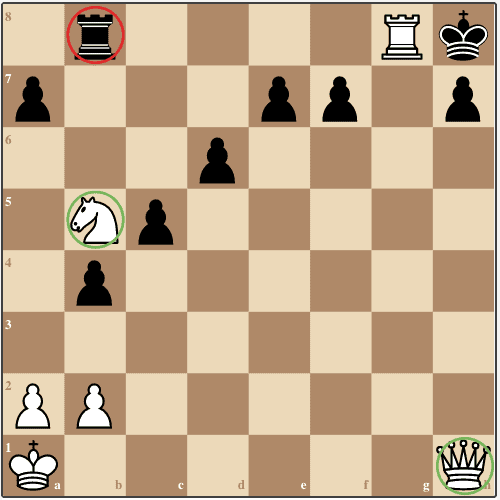
Nice game, right? Check out the full game at your leisure, here!
Conclusion and Further Reading
We hope you enjoyed our introductory guide to the Réti opening, providing an overview of the fundamental ideas behind this famous opening, looking at some of the key benefits to be had by learning and mastering this opening, and considering Black’s main responses after the mainline 1.Nf3 d5 2.c4. But, as you can see, the Réti is an opening that runs deep, and to play it with the confidence and skill displayed in the master game above, we highly recommend investing some time in quality resources like Lifetime Repertoires: 1. c4 / 1. Nf3 – Part 1 by International Master Christof Sielecki and Fide Master Carsten Hansen.
FAQs
1. What is the point of the Réti Opening?
The Réti Opening is a hypermodern opening whose main point is to induce Black to make a committal early pawn move before deciding how to set up. Typically, White will seek to launch a flank attack, undermining Black’s center with minor pieces to create and exploit positional weaknesses.
2. What is White’s idea in the Réti Opening?
There are several strong ideas for White in the Réti, but by nature of the opening, each of them depends on how Black reacts. In this way, you could say that White’s main idea in this opening is to use their first-move advantage to retain flexibility in their structure for as long as possible – all with the goal to undermine Black’s prematurely established center.
3. Is the Réti good for beginners?
The Réti is not an ideal opening for beginners in chess. To make the most of the benefits inherent to this opening requires knowledge and competence in a range of different positions, from 1.d4 openings to English openings, and even some KID/Gruenfeld theory. This is key to be able to recognize and exploit strategic concessions made by Black. For this reason, the Réti should be an opening a beginner chess player should only play once they know the possible transpositions like the back of their hand.
4. Who plays the Réti Opening?
The Réti is played and revered by players from club level upwards, including today’s top-level pros like Magnus Carlsen, Levon Aronian, and Vladimir Kramnik.
5. How do you stop the Réti opening?
There is no one way to stop the Réti opening! Though there are equalizing lines for Black, if the player with the White pieces is experienced and knows their way around the structural possibilities that may arise from this opening, it is a principled and theoRétically solid way to kick off a chess game.
-------------------------
Source
